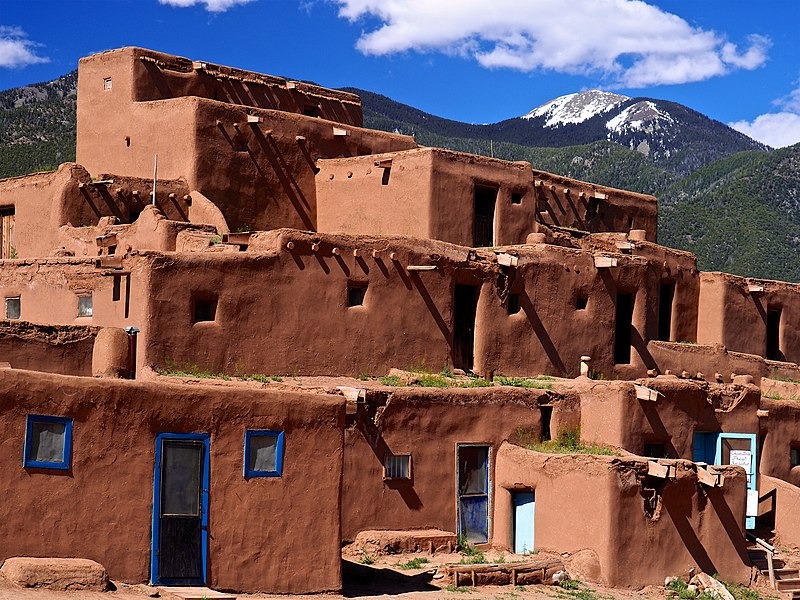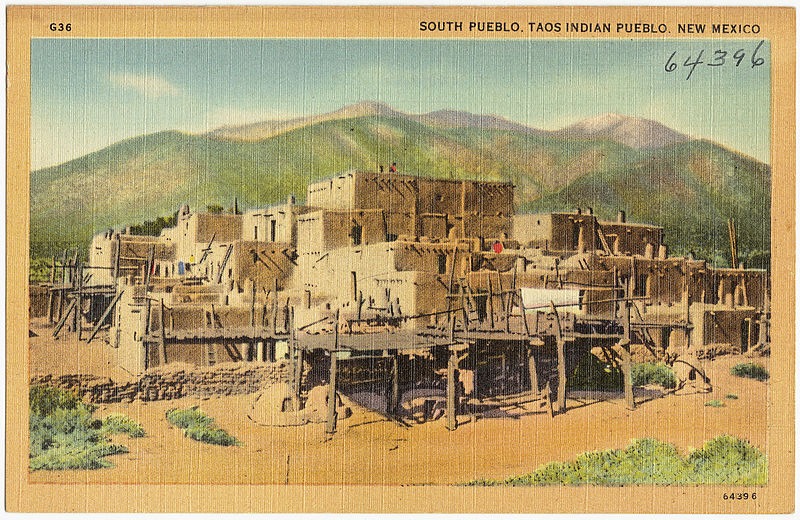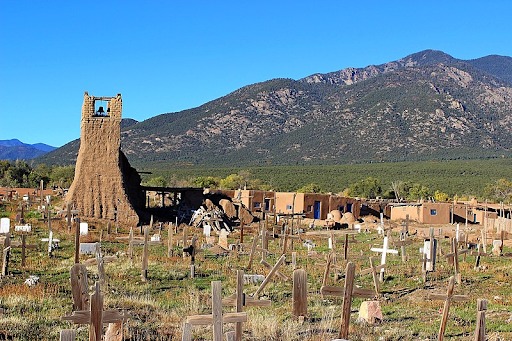Taos Pueblo and the Beginning of a Revolution

https://commons.wikimedia.org/wiki/File:Taos_Pueblo_2017-05-05.jpg Permission granted under the Creative Commons Attribution-Share Alike 4.0 International license. Creator: Photo by John Mackenzie Burke, 2017.
Popé, a religious leader from Ohkay Owingeh Pueblo, retreated to Taos Pueblo after he and his fity fellow Pueblo shamans were released by the Spanish following a tense standoff with a rapidly assembled Pueblo retaliatory force. Once there, he began to hatch a plot to remove the Spanish and their oppressive faith from the Rio Grande Pueblos once and for all.
Taos Pueblo’s remote location has instilled a fierce independence in its native people. The people of Taos tell that they arrived to the site following an eagle which dropped two feathers on opposite sides of two streams. This was an indication that the people should settle here.
Since Taos was on the very periphery of Spanish rule, it was more able to defend its customs than other pueblos. Twenty years before the Pueblo Revolt, the Taos people demolished the San Geronimo de Taos mission and executed the resident priest. The Spanish rebuilt the mission soon after, but then Taos Puebloans demolished it again during the Pueblo Revolt.
After being imprisoned by the Spanish along with forty-six other Pueblo religious leaders, Popé realized that the Spanish needed to be removed from New Mexico permanently in order for the Puebloan people to have peace and religious freedom. He was set free by armed Puebloan warriors who were furious at the execution of three of Popé’s fellow spiritual leader prisoners. Once free, he moved from his native Ohkay Owingeh pueblo to the more distant Taos Pueblo, where he could operate from a safer position. He spent the next five years organizing the pueblos to rebel against the Spanish. Popé promised his supporters that when the Spanish were sent back to Mexico, the Pueblo deities would reward the Pueblos with peace and prosperity. When he had acquired sufficient support, he handed out knotted cords to the leaders within his network. These came with instructions that the holders of the cords needed to untie a knot every day, and that when the cord was free of knots, it was time to attack. He chose not to send cords to the southern Pueblos; he doubted their loyalty due to their stronger willingness to adopt Spanish customs.
The Pueblo Revolt ignited on August 11, 1680. Puebloans burned down missions as the first targets of the revolt, with twenty-one of the thirty-three Franciscans in New Mexico being killed on the first day. The Spaniards that were able to escape from the hinterlands fled to Santa Fe, where Governor Otermin had barricaded himself within the Palace of the Governors and some fortified parts of the plaza. The siege of Santa Fe started three days later.
Taos retained its independence from Spanish reconquest a little longer than other pueblos due to its distance from Santa Fe. Once back within the Spanish sphere, it became a prosperous center of trade between the the Hispanosphere and the nomadic peoples of the plains and mountains. Taos was the center of the Taos Revolt against the American occupation of New Mexico, which led to the destruction of their mission church and the slaughter of hundreds of people.
In the present day, Taos Pueblo has been extremely successful in preserving its culture. It has the largest traditional multi-story pueblo left and, through fierce court battles against the United States, has regained access to its Sacred Blue Lake.
Images

https://commons.wikimedia.org/wiki/File:Taos_Pueblo_2017-05-05.jpg Permission granted under the Creative Commons Attribution-Share Alike 4.0 International license. Creator: Photo by John Mackenzie Burke, 2017.

https://commons.wikimedia.org/wiki/File:South_Pueblo,_Taos_Indian_Pueblo._New_Mexico.jpg.

https://commons.wikimedia.org/wiki/File:Original_Misson_church_and_cemetery_Taos_Pueblo,_Taos_New_Mexico_03.jpg Permission granted under the Creative Commons Attribution-Share Alike 4.0 International license. Creator: Photo by Yul Bratcher, 2017.